Feeding the World in 2050
In this NewsFlash, we discover a faster and cheaper way to make bespoke computer chips, find out how stem cells can help understand Long QT Syndrome and explore the problem of feeding a growing global population. Plus, how new live performance beat-tracking software puts the drummer back in the driving seat!
In this episode
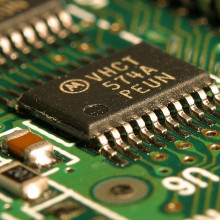
00:26 - Maskless chips
Maskless chips
A quicker cheaper way of making computer chips has been developed.
Integrated circuits, or silicon chips are now an absolutely critical part of our everyday life they are so cheap that it can make sense to put a computer into a juggling ball, but they are only cheap if they are made by the million, so most problems are solved with general purpose processors. These are great but they can be hundreds of times slower and less power efficient than custom circuits.
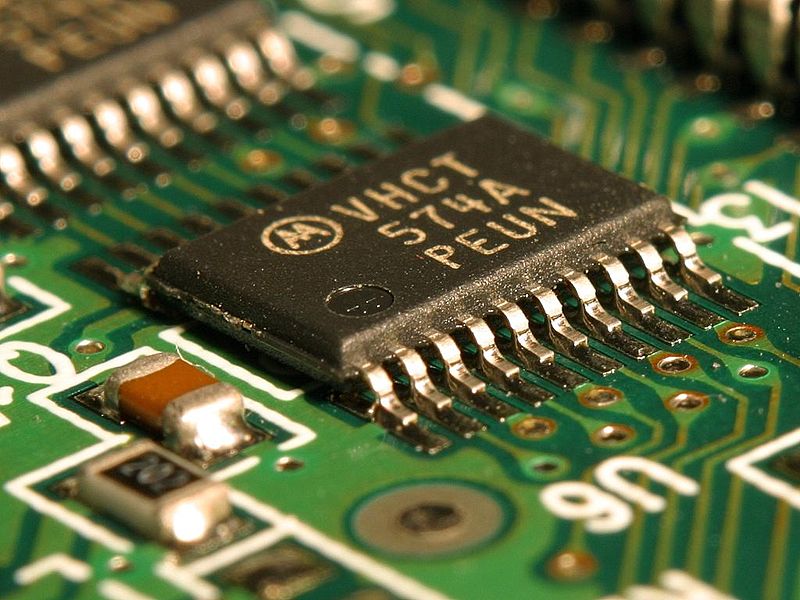 You make a silicon chip by making a mask with a pattern on it, then using UV light, photographically transferring this pattern onto a layer of plastic the chip and then etching away some of the silicon where the plastic has been removed. Different materials are added onto the silicon and then etched away up to 30 times, and you end up with a working chip. The problem is that the masks, a set can cost up to $3 million which means that if you only want a few thousand chips they cost a complete fortune, plus of course if you make a mistake in making the mask it is very very expensive.
You make a silicon chip by making a mask with a pattern on it, then using UV light, photographically transferring this pattern onto a layer of plastic the chip and then etching away some of the silicon where the plastic has been removed. Different materials are added onto the silicon and then etched away up to 30 times, and you end up with a working chip. The problem is that the masks, a set can cost up to $3 million which means that if you only want a few thousand chips they cost a complete fortune, plus of course if you make a mistake in making the mask it is very very expensive.
One alternative that has existed for a long time is to get rid of the mask completely and use an electron beam to write directly onto the plastic, but this is very very slow as there can be a billion transistors on a modern chip. Engineers working for KLA-Tencor have developed a system which instead of using one beam uses up to a million at once. They send a beam of electrons at a special chip covered in pixels that can be programmed to be transparent or act as a mirror to these electrons. They then focus the reflected beams onto the plastic on the silicon. They then move the beam around and paint the whole chip. They are aiming to be able to make a whole 15inch wafer in less than 10 mins.
This is unlikely to compete with photolithography for large quantitity production but for research and specialist applications such as the military it could be very economic.
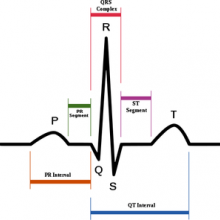
02:59 - Stem cell help for Long QT
Stem cell help for Long QT
Sufferers of a heart condition that runs in families and can cause sudden cardiac death, especially amongst the young, could look forward to new treatments for the disease thanks to a novel stem cell technique announced this week.
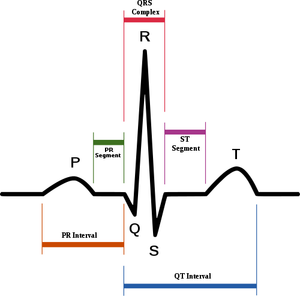 The disease, known as long QT syndrome (LQTS), leads to a delay in the rate at which heart cells electrically reset themselves between each beat. This can cause the heat beat to become irregular, especially when the heart is under heavy load, and places carriers of the condition at risk of potentially fatal cardiac arrest. But studying the condition, which is caused by abnormalities in a number of different genes, is difficult because it is hard to recreate a model heart cell to study in order to understand the underlying abnormalities. Similarly, without a model cell, it's also much more challenging to develop drugs to alleviate the problem, or identify drugs that actually exacerbate or trigger the disease.
The disease, known as long QT syndrome (LQTS), leads to a delay in the rate at which heart cells electrically reset themselves between each beat. This can cause the heat beat to become irregular, especially when the heart is under heavy load, and places carriers of the condition at risk of potentially fatal cardiac arrest. But studying the condition, which is caused by abnormalities in a number of different genes, is difficult because it is hard to recreate a model heart cell to study in order to understand the underlying abnormalities. Similarly, without a model cell, it's also much more challenging to develop drugs to alleviate the problem, or identify drugs that actually exacerbate or trigger the disease.
But now Ilanit Itzhaki, who's based at Israel's Institute of Technology in Haifa, has successfully used stem cell technology to culture long QT syndrome cells in a dish so that they can be studied. The work, which is published in Nature, involved first collecting a small number of skin cells called fibroblasts from a patient with one form of LQTS.
Next, a virus was used to add to the cells three genes, called SOX2, KLF4 and OCT4, which caused them to "un-specialise" and become so-called IPSCs - induced pluripotent stem cells, resembling the cells found in an early human embryo. When these cells were grown in a culture dish they then began to transform themselves into many of the different cell types found as an embryo develops, including cells that naturally began to beat like embryonic heart cells.
Studying these cells further revealed that they looked and behaved, both chemically and electrically, like early heart cells. Critically, they also showed electrical abnormalities identical to those seen in adults with LQTS.
Isolating these cells, it was then possible to test them against a range of drugs known to aggravate or ameliorate LQTS to see how these agents were impacting on the electrical behaviour of the cells.
This means that, for the first time, it is possible to produce model cells directly from an affected patient in order to test possible therapies and also to rationally develop novel drugs in vitro. The same approach could also be used to learn more about a range of different diseases, not just heart conditions.
As Itzhaki points out, "The concepts described may also be extended to model several other human genetic disorders, enabling translational research into disease mechanisms and therapies."

07:06 - Can we feed the world in 2050?
Can we feed the world in 2050?
Sarah - The problem of how we might feed the earth's population in the future has come under further scrutiny this week with the publication of Agrimonde - a book that is the summation of two years of work by two French institutions - INRA, the French National Institute of Agricultural Research, and CIRAD, which carries out agricultural research to help developing countries. Despite the study being carried out by two French Institutions, the book has been published in English, in order for the results to be more accessible on the world stage. I travelled to Paris for the launch of the study and spoke to Patrick Caron from the institution CIRAD about how even today we struggle to feed everyone on Earth...
 Patrick - There is a very big problem - we're used to finding food in the supermarket and having money in our pockets to pay for that food. But that's not the case in all countries, and not even the case in our own country sometimes. We have to remember that 1 billion people in thwe world are suffering from what is unacceptable. one death from malnutrition is one death that should not be accepted for ethical reasons. human history has been paved with this problem, and starvation has always been part of our history, but in the 1970s we discovered a tremendous growth in population at the world level.
Patrick - There is a very big problem - we're used to finding food in the supermarket and having money in our pockets to pay for that food. But that's not the case in all countries, and not even the case in our own country sometimes. We have to remember that 1 billion people in thwe world are suffering from what is unacceptable. one death from malnutrition is one death that should not be accepted for ethical reasons. human history has been paved with this problem, and starvation has always been part of our history, but in the 1970s we discovered a tremendous growth in population at the world level.
Sarah - And it's the continued increase of this population growth - predicted to reach 9 billion people by 2050 - that is causing concern. Now, concern about feeding the growing population isn't new, but this is the first study to integrate looking at patterns of food production and consumption over the past forty years, with two possible scenarios for how we might proceed with providing the world with food in the future. The first they called Agrimonde 1. In this scenario, the world is characterised by sustainability - so a decrease in both undernourishment and overconsumption, ecological intensification of farming, and security of trade. The second scenario, called Agrimonde GO, is kind of the 'business as usual' scenario, where food production increases year on year as it has done in the last 40 years, trade is liberal, and little thought is given to environmental impact of feeding the world. Agrimonde 1 would involve a lot of changes, not just with agriculture but also our eating habits. The current world average daily calorie consumption is 3000 kilo calories, but this is not evenly distributed - in some areas people eat a lot more, like in Europe and the united states, and in some people eat a lot less. The aim for the scenario Agrimonde 1 is to have everyone eating 3000 kilocals a day, irrespective of where they live. The way people consume and waste food is an area that Agrimonde looked at in detail, and an area which will need to see changes, as Marion Guillou from the French National Institute for Agricultural Research explains...
Marion - Eating habits are different in different parts of the world. Our European habits for example are not sustainable. First there are health questions, and then it's not sustainable if all the world began to eat as we do, as it would put a pressure on production that would be tremendous. So what we did was we looked at a scheme of eating habits that is compatible with good health, i.e. 3000 kilocalories, and then we looked at whether it is possible to feed the world with this sort of eating habit all around the world, and the answer is yes, but with some questions we need to answer.
Sarah - And given that the institutions INRA and CIRAD both carry our agronomic and agricultural research, this is one of the ways we could innovate in the future. Genetic techniques could be used to increase yields, either by genetic modification to produce pest resistant or salt tolerant varieties of wheat or corn, or by marker assisted selection - a way of making the old fashioned method of plant crossing to produce varieties with the characteristics you want more efficient. But producing these new varieties will not be the whole story. Francois Houllier from French National Institute for Agricultural Research...
Francois - If we consider the agricultural challenges we face and the different solutions we may imagine, we need to consider the way we grow our crops. By this I'm thinking of the nitrogen and different fertilisers we use, and the pesticides that we need to reduce. We also have to think about the rotation of the crops. We will need to combine different approaches, different disciplines and different techniques.
Sarah - So, we need to adopt an integrated approach to increasing food production and we need to change our eating habits and stop wasting so much food - not exactly an easy fix, but if we can manage these things, then the conclusion of the book was that yes, we will be able to feed the world...
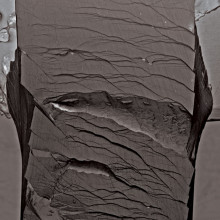
12:41 - Tough metallic glasses
Tough metallic glasses
Tougher glasses have been developed than ever before
Metals are wonderful material and have revolutionised human life. They are all crystalline which means that their atoms are arranged in repeating patterns over a relatively large scale, but they are not nearly as strong or stiff as you would expect from the bonds between the atoms. One of the reasons for this is that tiny defects in the crystals can move through the crystal relatively easily allowing the crystal to deform at much lower forces than you would otherwise expect.
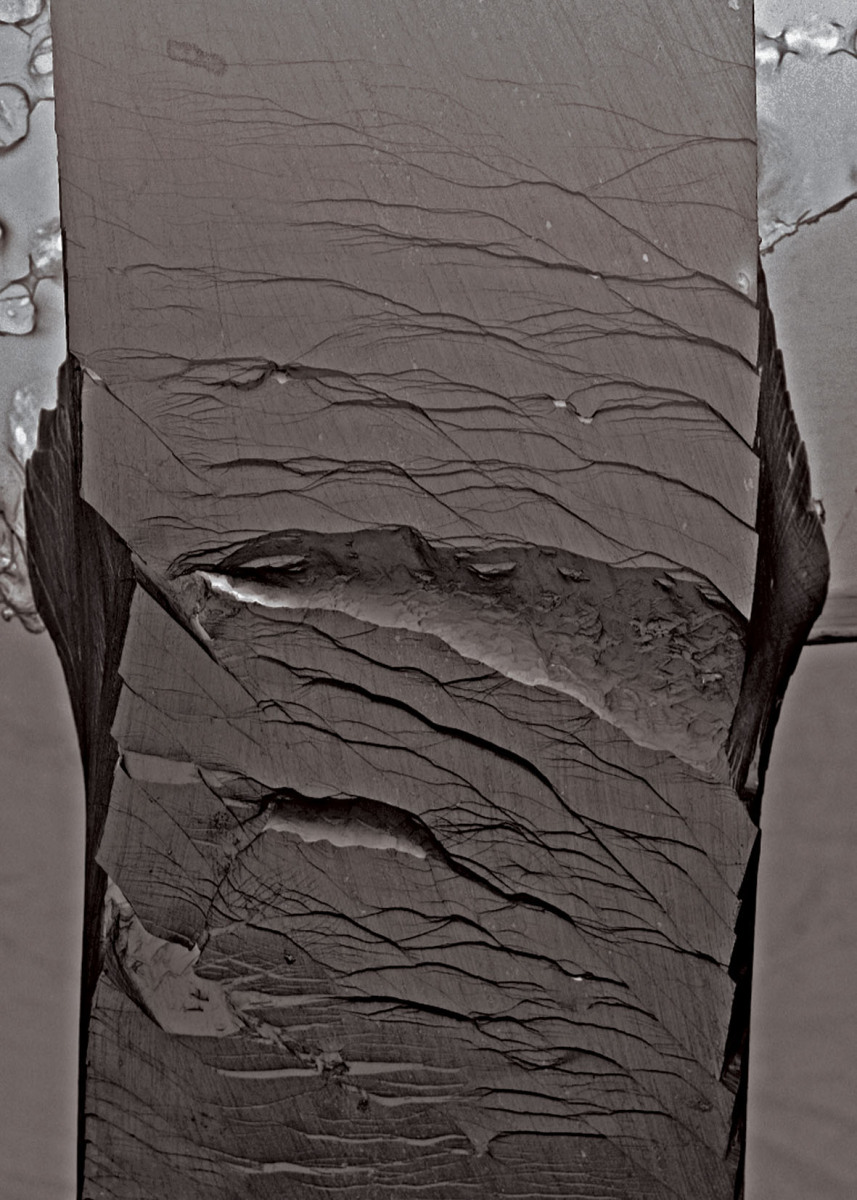 One way of making the metal stronger and harder is to make a glass with no large scale structure. When metals are molten their atoms are arranged randomly so if you can cool them quickly enough they won't crystallise especially if you are using a complex alloy with lots of different sizes of atoms. These are very hard and wear resistant, and very efficiently elastic, but the are not tough because unlike a normal metal they can't absorb energy in an impact by deforming, so cracks can pass through them very easily like normal glass.
One way of making the metal stronger and harder is to make a glass with no large scale structure. When metals are molten their atoms are arranged randomly so if you can cool them quickly enough they won't crystallise especially if you are using a complex alloy with lots of different sizes of atoms. These are very hard and wear resistant, and very efficiently elastic, but the are not tough because unlike a normal metal they can't absorb energy in an impact by deforming, so cracks can pass through them very easily like normal glass.
Marios D. Demetriou and collegues from the California Institute of Technology have managed to greatly increase their toughness by making a glass involving a palladium alloy, this made the glass much better at deforming slightly under large shear forces. This means that at the front of a crack the glass distorts slightly blunting the crack instead of making the crack longer. This has produced a material that is both stronger and tougher than any other metal.
It does however have the problem that Palladium is much rarer than Gold and costs about $16000 per kilogram, so it is unlikely to be used for anything very large. But the group is now working on alloys with similar properties which are a bit cheaper.
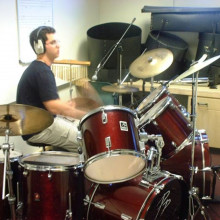
15:25 - Letting the Drummer Set the Pace
Letting the Drummer Set the Pace
Andrew Robertson, Queen Mary University of London
Chris - Now traditionally, the drummer in a band is there to set and to maintain the pace of the music. But if pre-recorded samples and backing tracks are included in the performance instead the drummer now has to try and keep time with them. Now though, a new computer programme, which has been developed by a musician and researcher, Dr. Andrew Robertson at Queen Mary University of London could hand control back to the drummer. To tell us more here is Jane Reck from the EPSRC.
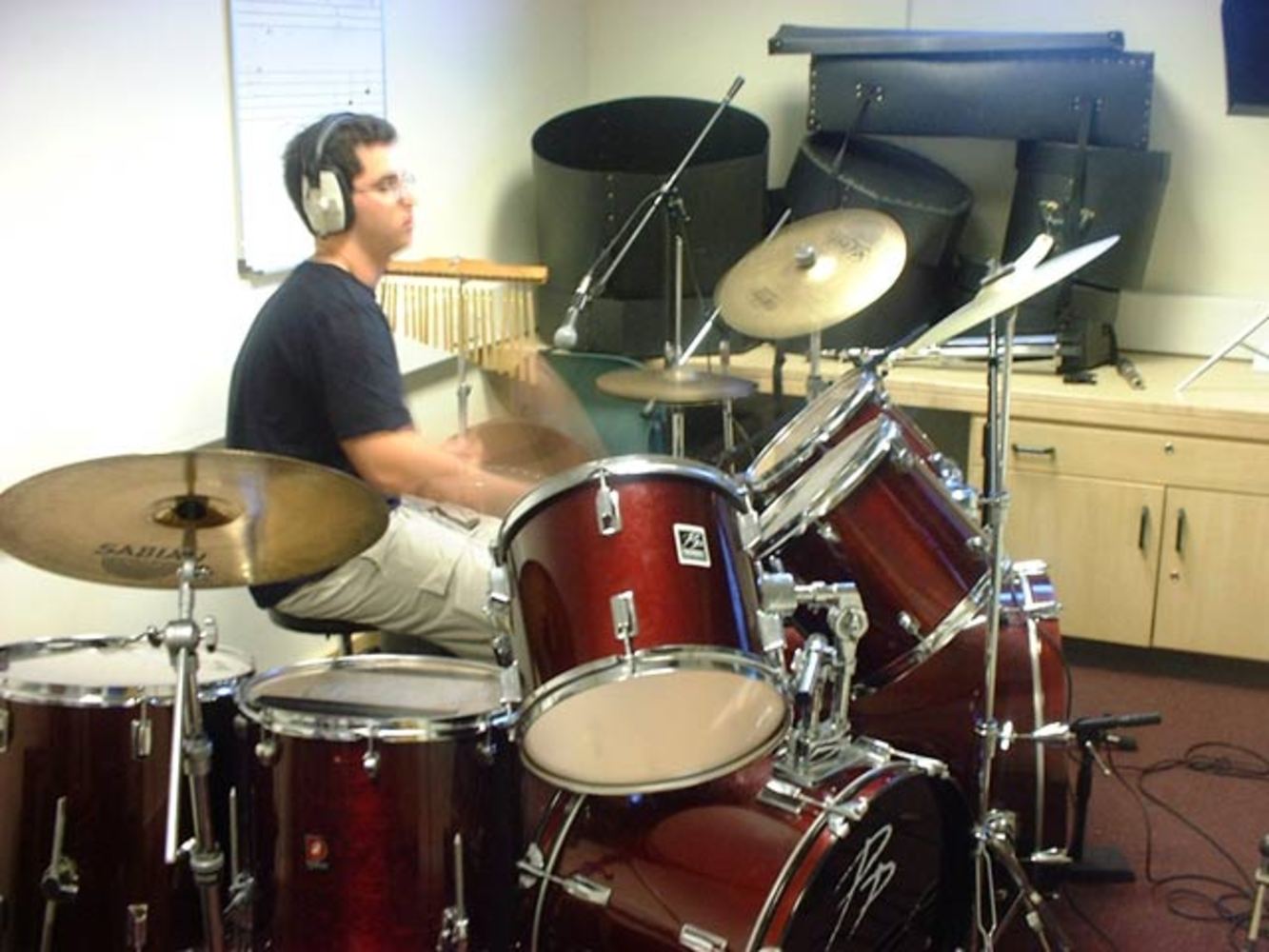 Jane - Like a lot of bands, Dr. Andrew Robertson's group uses a mix of live performance with pre-recorded backing tracks and synthesisers. But Andrew's band is different because he's made it possible for the drummer to set the pace of the music. If the drummer wants things to speed up or slow down, everything else follows the pace they set.
Jane - Like a lot of bands, Dr. Andrew Robertson's group uses a mix of live performance with pre-recorded backing tracks and synthesisers. But Andrew's band is different because he's made it possible for the drummer to set the pace of the music. If the drummer wants things to speed up or slow down, everything else follows the pace they set.
Andrew - I designed a drum tracking system that's called B-keeper to take in microphone input from the drums and to control sequencers in terms of their tempo to stay in time even though there are slight fluctuations in tempo. One analogy is, if you're on a motorbike, and you are on a motorway, and you're trying to catch up with a car that's ahead of you, all you have to do on the motorbike is accelerate. Then as you're approaching the car, you need to actually go off a bit, and sort of slightly slow down from the speed you are at, so that you're exactly the same speed as the car, and that you're at the same side of the car. You know, you look to your right, and there's the driver's seat. So, you're trying to be at the same speed and actually at the right place as well. There's no point being at the right speed and being half a beat ahead of the car. I see the drummer as the car. He's kind of just cruising along and the system is effectively more of the motorbike because it actually has the ability to zoom up and catch up, or put on the brake and slow down slightly. So, I've made that system for music.
Jane - Andrew is a researcher at Queen Mary University of London. He says it's the first software of its type for drummers. The drums are linked up to the computer software by microphones.
Andrew - We just pop a mic in the kick and one in the snare put it out to this computer. This is analysed for something called onset detection. So, when they hit that drum, you get an event and it's sent to you as a bang or it's a hit. So it's analysing a sequence of events. This is done relative to a click track that the sequencer's using. The computer uses its metronome. It's got its own idea of bars and beats, of what it's doing. So you send out on the one hand, the computer's click, on the other, the kick and the snare from the drummer. The software is making the best adjustment to align the two, so the best adjustment in tempo, so you're at the same speed and the same exact place as the drummer. It's also got a nice count-in where you can count in with the sticks and that initialises it ready to go.
(Music)
Jane - This is the drummer playing live with backing from a synthesised baseline. As the music progresses, a robotic xylophone is also brought in. The software controls the speed of the baseline and the xylophone to keep up with the drummer. You'll hear different parts of this track so that by the end of the piece, when the drummer has gradually built up to a much quicker speed, you'll be able to hear a real difference in the tempo with everything, following the lead of the drummer.
(Music)
Jane - So the music goes from this to this...
(Music)
Jane - And finally, to this....
(Music)
Jane - Drummer David Knox says the software makes a big difference to a performance.
David - It's something that I can interact with. So, this computer responds to me like another musician. I interact with it as I do with the bassist and the keyboardist, and the singer. In a live situation, if the audience is enjoying it and I'm enjoying myself, and there's a buzz going on, I can go there. I can speed up. I might find that this chorus, I really want to kind of give it a bit of extra energy, and I know the machines there. I go for it, it listens and away we go, you know.
Jane - Andrew's work is funded by the Engineering and Physical Sciences Research Council and the Royal Academy of Engineering. So it's UK-funded research that's helping to keep this country ahead of the game in the music industry. Nowadays, a lot of musicians make more money from live performances than music sales. So Andrew says it's vital that these musicians are able to offer more spontaneity in their performances to keep people coming back for more.
Andrew - It's very difficult for musicians to actually sell hard copies of their records, so they don't see the kind of revenue they used to see when they had the vinyl and CD sales. Actually, it's in the live arena that a lot of things are happening. Given that, when you look at the bands out there that are exciting, a lot of them are using technology. They're bringing technology into the shows. If bands take this up and start using it, I think they benefit from it.
Jane - You can find out more about the software at B-keeper.org and Andrew's band is called Higamos Hogamos.
(Music)
Chris - What a fantastic invention. That was Jane Reck from the EPSRC and she was talking to Dr. Andrew Robertson from Queen Mary University of London. And if you'd like to catch up on anything we've covered so far this week, the references and the transcripts for each of the news stories we've discussed are online at thenakedscientists.com/news.










Comments
Add a comment